Welcome to my comprehensive guide on lawn and landscaping maintenance tips. Whether you’re a seasoned gardener or a beginner, these expert suggestions will help you nurture a vibrant and healthy outdoor space. From inspecting and pruning trees to testing and balancing soil nutrients, you’ll find valuable advice to keep your lawn and landscape looking its best.
- Inspect trees and shrubs for broken or damaged branches and prune them or have them removed.
- Test your soil for proper pH balance and nutrient mix.
- Fertilize your lawn based on its specific nutrient needs and the optimal time of year for your grass variety.
- Check with your local agricultural extension office for any restrictions or regulations on fertilizer use.
- Apply pre-emergent weed control in spring and clean up plant beds by raking old leaves and debris.
By following these key takeaways and more, you’ll be equipped with the knowledge and techniques necessary to maintain a healthy and beautiful lawn and landscape. Let’s dive in and get started!
Inspect and Prune Trees and Shrubs
Keeping an eye on the health of your trees and shrubs is essential for maintaining a beautiful landscape. Regular inspections and pruning will help promote healthy growth and prevent any potential hazards. It’s important to inspect your trees and shrubs for any broken or damaged branches, as these can pose a risk to your property and safety. By promptly identifying and addressing these issues, you can prevent further damage and ensure the longevity of your plants.
When inspecting your trees and shrubs, look for any branches that are cracked, split, or hanging down. These can be signs of damage from storms or disease. It’s crucial to remove these branches promptly to avoid any potential accidents or further damage to the plant. Be sure to use proper pruning techniques, making clean cuts just outside the branch collar to minimize the risk of disease or pests entering the plant.
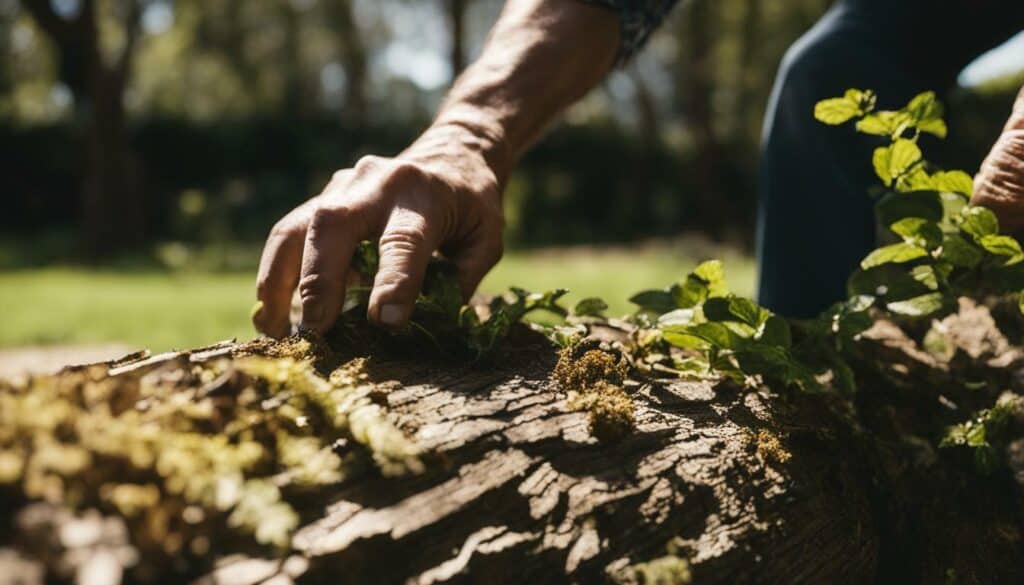
Pruning is not only important for removing damaged branches, but it also helps shape and promote healthy growth. By selectively removing branches, you can improve air circulation and sunlight penetration, which are both essential for plant health. Pruning can also help maintain the desired size and shape of your trees and shrubs, enhancing the overall aesthetic of your landscape.
Remember, if you are unsure about the proper pruning techniques or need assistance with larger trees, it’s always a good idea to consult a professional arborist. They have the knowledge and expertise to safely and effectively prune your trees and shrubs while ensuring their continued health and vitality. By investing in regular inspections and pruning, you can enjoy a thriving landscape that adds beauty and value to your property.
Test and Balance Soil Nutrients
A healthy lawn and landscape start with understanding the nutrient needs of your soil. Testing and balancing the pH levels and nutrient mix will provide the optimal conditions for your plants to thrive. Before you fertilize your lawn or garden, it’s important to know what nutrients are lacking and which ones are in excess. A soil test can give you valuable information about your soil’s composition and help you make informed decisions about fertilization.
When conducting a soil test, you can either use a DIY soil testing kit or send a sample to a professional lab for analysis. These tests typically measure pH levels, as well as the levels of essential nutrients like nitrogen, phosphorus, and potassium. The results will help you determine if your soil needs amendments to correct imbalances.
Once you’ve obtained the results of your soil test, you can adjust the pH and nutrient levels accordingly. Adding lime can raise the pH of acidic soils, while sulfur can lower the pH of alkaline soils. To improve nutrient levels, you can use organic fertilizers, compost, or specific mineral-based fertilizers based on the recommendations provided in the soil test analysis.
Soil Nutrient Requirements
| Nutrient | Function | Deficiency Symptoms |
|---|---|---|
| Nitrogen (N) | Promotes leaf growth and vibrant green color | Yellowing leaves, stunted growth |
| Phosphorus (P) | Aids in root development and flower production | Poor root growth, lack of flowering |
| Potassium (K) | Enhances overall plant health and disease resistance | Weak stems, leaf discoloration |
Remember to follow the instructions on fertilizer packaging carefully when applying amendments to your soil. Over-fertilizing can harm your plants and contribute to pollution of water bodies. It’s also important to retest your soil periodically, as nutrient levels can change over time.
By testing and balancing your soil nutrients, you’ll be setting the foundation for a thriving lawn and landscape. This proactive approach to soil management will help ensure your plants have the best possible growing conditions, leading to a healthy and beautiful outdoor space.
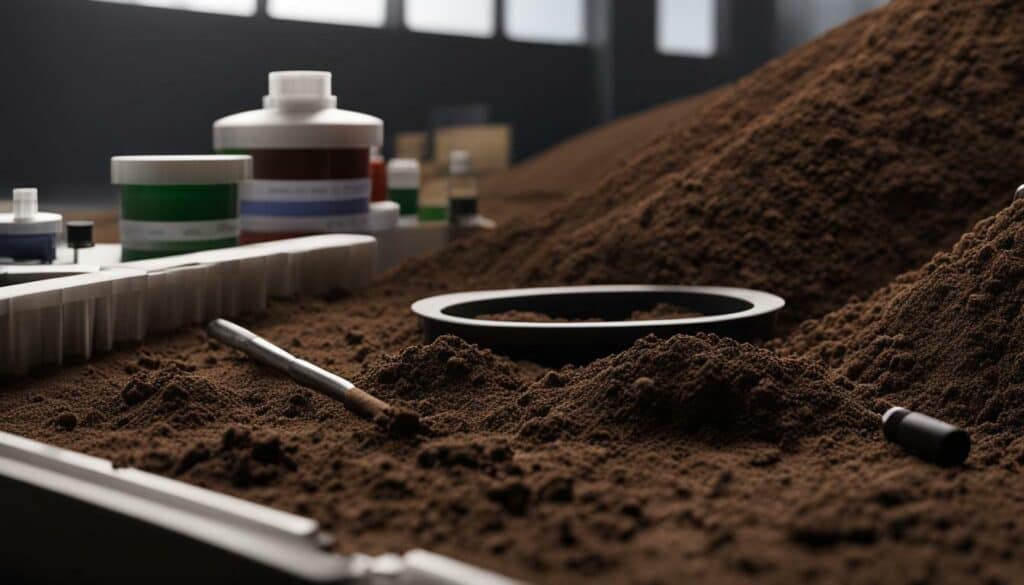
Fertilizing your lawn is a crucial step in ensuring its vitality and beauty. Understanding your grass’s specific nutrient needs and the right timing for application will yield impressive results. By providing your lawn with the right balance of nutrients, you can promote healthy growth, vibrant color, and strong resistance to weeds and diseases.
When it comes to lawn care, one size does not fit all. Different grass varieties have different nutrient requirements, so it’s important to tailor your fertilization approach accordingly. A soil test can provide valuable insights into your lawn’s nutrient deficiencies and pH levels. Based on the results, you can choose a fertilizer that is specifically formulated to meet your grass’s needs.
Timing is everything when it comes to lawn fertilization. Applying the fertilizer at the right time of year is key to its effectiveness. Typically, the best time to fertilize is in the spring, just before your grass enters its active growth phase. This allows the nutrients to be readily absorbed by the roots, providing a strong foundation for lush and healthy turf.
Remember to follow the manufacturer’s instructions for application rates and methods. Applying too much fertilizer can lead to nutrient burn and damage to your lawn, while applying too little may not provide the desired results. A controlled-release or slow-release fertilizer can be a great option, as it releases nutrients gradually over time, ensuring a steady supply for your grass.
Proper Lawn Fertilization Tips
- Choose a fertilizer that matches your grass’s specific nutrient needs.
- Conduct a soil test to determine any nutrient deficiencies and adjust accordingly.
- Apply the fertilizer in the spring, just before your grass enters its active growth phase.
- Follow the manufacturer’s instructions for application rates and methods.
- Consider using a controlled-release or slow-release fertilizer for gradual nutrient release.
| Season | Fertilization Frequency |
|---|---|
| Spring | Every 6-8 weeks |
| Summer | Every 6-8 weeks |
| Fall | Every 6-8 weeks |
Fertilizing your lawn is an essential part of lawn care. By providing your grass with the right nutrients at the right time, you can ensure its health and beauty. Remember to tailor your fertilizer choice to your grass’s specific needs and to follow proper application guidelines. With proper lawn fertilization, you’ll be well on your way to a lush and vibrant lawn.

By following these lawn care tips and focusing on proper fertilization, you’ll be able to maintain a healthy and beautiful lawn throughout the year. Remember to consult local experts or resources for specific recommendations based on your region or grass type. With a little care and attention, your lawn will be the envy of the neighborhood!
Following Fertilizer Regulations
It’s important to be aware of any regulations or restrictions on fertilizer use in your region. Contact your local agricultural extension office to ensure compliance and environmental responsibility.
The use of fertilizers in lawn and landscaping maintenance is subject to regulations that vary from one area to another. These regulations are in place to protect water quality and prevent the overuse or misuse of fertilizers, which can have negative impacts on the environment. By following these regulations, you can help maintain a healthy ecosystem while keeping your lawn and landscape in top shape.
Your local agricultural extension office is a valuable resource for information on fertilizer use restrictions and regulations specific to your area. They can provide guidance on when and how to apply fertilizers, as well as recommend products that are suitable for your region. They may also offer workshops or educational materials to help you make informed choices about lawn and garden care.
By working in compliance with fertilizer regulations, you can ensure that you are using fertilizers responsibly and contributing to the health of your local environment. Contact your local agricultural extension office today to learn more about fertilizer use restrictions in your area.
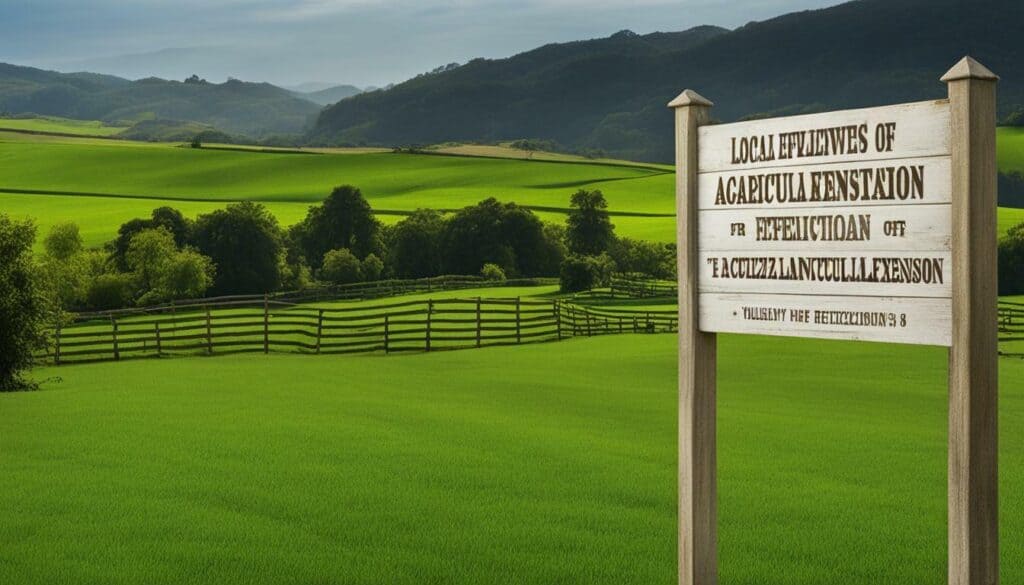
Mulching around your trees and shrubs not only enhances their aesthetic appeal but also provides essential nutrients. Applying slow-release fertilizer and using proper mulching techniques will support their healthy growth. By following these tips, you can ensure that your trees and shrubs thrive.
First, choose a slow-release fertilizer that is specifically formulated for trees and shrubs. This type of fertilizer releases nutrients slowly over time, providing a steady supply of food for your plants. Apply the fertilizer according to the manufacturer’s instructions, taking care not to overdo it. Too much fertilizer can cause burn and damage the roots of your trees and shrubs.
Once you have applied the fertilizer, it’s time to mulch. Spread a layer of mulch around the base of your trees and shrubs, making sure to keep it a few inches away from the trunk or stems. This will help prevent rot and disease. The mulch should be about 2-3 inches deep, providing enough insulation for the roots and helping to retain moisture in the soil.

When selecting mulch, opt for organic materials such as wood chips, bark, or compost. These types of mulch break down over time, adding nutrients to the soil. Additionally, mulch helps to suppress weeds and regulate soil temperature, keeping your trees and shrubs happy and healthy.
To create a neat and tidy appearance, use a rake or garden fork to spread the mulch evenly around your trees and shrubs. Avoid piling the mulch up against the trunk or stems, as this can create a haven for pests and diseases. Instead, create a slight depression around the base to prevent water runoff.
By applying slow-release fertilizer and mulching properly, you can provide your trees and shrubs with the nutrients they need for robust growth. Remember to monitor the moisture levels in the soil and adjust watering accordingly. With proper care, your trees and shrubs will flourish, adding beauty and value to your landscape.
Weed Control and Plant Bed Maintenance
Weed control plays a significant role in maintaining a tidy and well-maintained garden. Learn how to effectively prevent weeds and rejuvenate your plant beds with a fresh layer of mulch.
One of the best ways to prevent weeds from taking over your plant beds is by applying pre-emergent weed control in the spring. This is especially important for combating stubborn weeds like crabgrass. A good rule of thumb is to apply the weed control when the forsythia is in full bloom. This timing ensures that the soil temperature is optimal for preventing weed germination. Follow the instructions on the product packaging for the correct application rate and method.
In addition to weed control, it’s essential to clean up your plant beds regularly. Start by raking away any old leaves and debris that may have accumulated. This not only improves the appearance of your garden but also helps to minimize the risk of pests and diseases. Creating neat edges around your plant beds also adds a polished look to your landscape.
Once your plant beds are clean, it’s time to apply a fresh layer of mulch. Mulch not only provides an attractive finish to your garden but also helps to suppress weed growth and retain moisture in the soil. When applying mulch, ensure that it does not touch the trunks of trees or plants, as this can cause rot and disease. Aim for a depth of around 2 to 3 inches, making sure not to exceed this thickness to avoid suffocating the plants beneath.
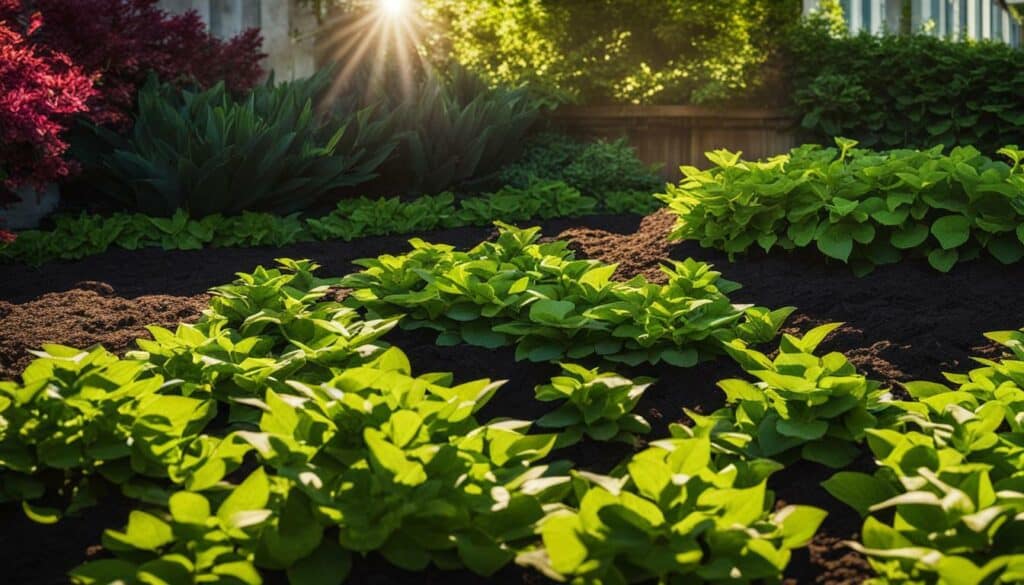
| Benefits of Weed Control and Plant Bed Maintenance | How to Achieve It |
|---|---|
| Prevents weed growth | Apply pre-emergent weed control in spring |
| Improves the appearance of your garden | Clean up plant beds by raking away debris |
| Reduces the risk of pests and diseases | Create neat edges around plant beds |
| Retains moisture in the soil | Apply a fresh layer of mulch |
By implementing these weed control and plant bed maintenance practices, you can ensure that your garden stays healthy and vibrant throughout the growing season. Remember to tailor your lawn care routine to your specific region and consult with local experts for additional advice and guidance.
Irrigation System Inspection
An irrigation system that functions optimally is vital for healthy plant growth. Regular inspections and adjustments, such as modifying soil pH if needed, will help you achieve a thriving landscape.
When inspecting your irrigation system, start by checking for any leaks or broken sprinkler heads. These can lead to water waste and uneven distribution, which can negatively impact your plants’ health. Replace or repair any damaged components to ensure proper water flow.
Next, evaluate the coverage of your sprinklers. Make sure that all areas of your lawn and landscape receive adequate water. Adjust the direction and distance of the sprinkler heads as needed to avoid over-watering or under-watering certain areas.
Another important aspect of irrigation system maintenance is testing the soil moisture. Use a soil moisture meter or simply dig a small hole to check the moisture level. The goal is to water your plants deeply but infrequently, allowing the roots to develop strong systems. Adjust the irrigation schedule accordingly to avoid waterlogged or drought-stressed plants.
Finally, consider the pH of your soil. Soil pH affects nutrient availability to plants. Most plants prefer a slightly acidic to neutral pH range. If your soil pH is not within the optimal range for the plants in your landscape, you may need to make adjustments. Testing kits or professional soil analysis services can help you determine the pH level and suggest appropriate amendments if necessary.
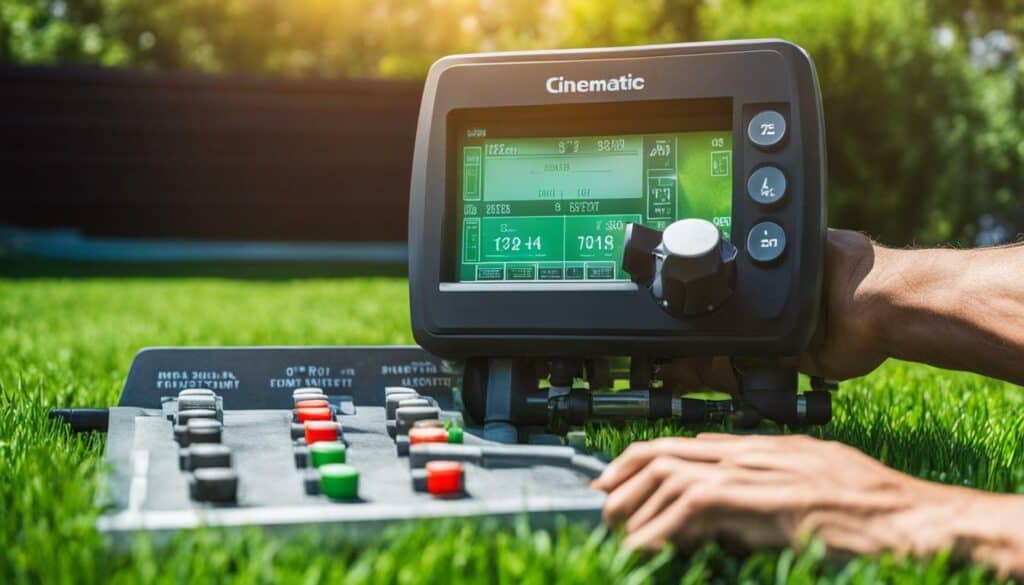
| Inspection Checklist | Adjustments |
|---|---|
| Check for leaks and broken sprinkler heads | Replace or repair damaged components |
| Evaluate sprinkler coverage | Adjust direction and distance of sprinkler heads |
| Test soil moisture | Water deeply but infrequently |
| Check soil pH | Make adjustments if necessary |
Regularly inspecting and maintaining your irrigation system will help ensure that your plants receive the necessary water for healthy growth. By making adjustments as needed and monitoring soil moisture levels, you can create an optimal environment for your landscape to thrive.
Key Takeaways
- Inspect your irrigation system for leaks and broken components.
- Adjust sprinkler heads to ensure even coverage.
- Test soil moisture and water deeply but infrequently.
- Check the pH of your soil and make adjustments if necessary.
Landscaping Tips for Healthy Growth
Each area of your landscape has unique requirements for healthy growth. Discover how to care for shady areas, choose the right tree size, and maintain a lawn that naturally prevents weed growth.
Caring for Shady Areas
Shady areas in your landscape require special attention to ensure healthy growth. These areas receive less sunlight, which can affect the health of your plants. To care for shady areas:
- Select plants that are well-suited for shady conditions, such as ferns, hostas, and impatiens.
- Provide proper irrigation to prevent waterlogging, as shady areas tend to be more prone to moisture retention.
- Apply less water and fertilizer to shady areas, as they require less nutrients compared to sunnier spots in your yard.
Choosing the Right Tree Size
When planting trees, it is crucial to consider the final height and width they will reach. This will prevent overcrowding and ensure proper growth. Follow these tips when choosing the right tree size:
- Research the mature size of different tree species to determine which ones will suit your landscape best.
- Consider factors such as nearby structures, power lines, and the proximity to other trees or plants.
- Plant trees at an appropriate distance from your house or other structures to avoid potential damage from roots or branches.
Maintaining a Weed-Preventing Lawn
A well-maintained lawn can naturally prevent weed growth. Implement these strategies to keep your lawn healthy and weed-free:
- Regularly mow your lawn at the recommended height for your grass type. This helps shade out weeds and promotes thicker grass growth.
- Apply a pre-emergent weed control product in the spring when forsythia is in full bloom. This will help prevent the germination of common lawn weeds like crabgrass.
- Practice proper watering techniques, providing deep, infrequent watering to encourage deep root growth and discourage weed establishment.
- Perform regular lawn maintenance tasks like aeration, overseeding, and dethatching to keep your lawn healthy and dense.

By following these landscaping tips, you can ensure healthy growth in each area of your landscape. Care for shady areas, choose the right tree size, and maintain a lawn that naturally prevents weed growth. This will help you create a beautiful and thriving outdoor space.
Creative Landscape Solutions and Conclusion
With these creative landscape solutions, you can enhance the beauty and functionality of your outdoor space. By incorporating ground covers, choosing the right edging, and protecting tree roots, you’ll create an environment that thrives.
Ground covers are an excellent addition to any landscape, providing erosion control, weed suppression, and visual interest. Consider using low-growing plants like creeping thyme or mondo grass to fill in bare areas and prevent soil erosion. These ground covers are not only practical but also add color and texture to your garden.
When it comes to edging, selecting the right type can make a significant difference in the overall appearance of your yard. Plastic edging is perfect for curved areas, allowing for flexibility and easy installation. For flat areas, steel edging provides a clean and crisp look, defining the edges of your walkways and flower beds.
Protecting the roots of your trees is crucial for their long-term health. By mulching around the base of your trees, you provide insulation, retain moisture, and prevent lawn mower damage. Use shredded mulch instead of rocks, as it helps retain moisture better and adds organic matter to the soil as it decomposes.
By implementing these creative landscape solutions, you’ll be on your way to a stunning and thriving outdoor space. Remember to tailor your lawn care practices to your specific region and consult with local experts for the best results. With a little planning and maintenance, you can achieve a beautiful and healthy lawn and landscape.
FAQ on Lawn and Landscaping Maintenance Tips
Q: How often should I inspect my trees and shrubs for broken or damaged branches?
A: It is recommended to inspect your trees and shrubs at least once a year for broken or damaged branches. If you notice any issues, prune them or have them removed.
Q: How can I test the pH balance and nutrient mix of my soil?
A: There are soil testing kits available at garden centers or you can send a sample to a professional laboratory for analysis. This will help you determine the pH balance and nutrient mix of your soil.
Q: When should I fertilize my lawn?
A: The optimal time to fertilize your lawn will depend on the specific nutrient needs of your grass variety. It is recommended to follow the guidelines provided by your local agricultural extension office or consult with a professional landscaper.
Q: How much fertilizer should I use on my lawn?
A: It is important to avoid using too much or too little fertilizer on your lawn. Follow the instructions provided on the fertilizer package or consult with a professional for appropriate application rates.
Q: Are there any restrictions or regulations on fertilizer use?
A: It is advisable to check with your local agricultural extension office for any restrictions or regulations on fertilizer use in your area. They can provide specific guidelines based on your region and environmental concerns.
Q: Should I fertilize trees and shrubs before or after applying mulch?
A: It is recommended to apply a slow-release fertilizer to trees and shrubs before applying mulch. This will help provide them with the nutrients they need for healthy growth.
Q: When should I apply pre-emergent weed control in my plant beds?
A: It is best to apply pre-emergent weed control in your plant beds in the spring when forsythia is in full bloom. This will help prevent the growth of weeds, particularly crabgrass.
Q: How should I clean up my plant beds?
A: To clean up your plant beds, rake out any old leaves and debris and create neat edges. This will help give your landscape a tidy appearance and prevent the growth of weeds.
Q: How much mulch should I apply to my plant beds?
A: When applying mulch to your plant beds, ensure that it does not touch tree trunks and does not exceed a 3-inch depth. This will help maintain proper moisture levels and prevent the growth of weeds.
Q: How often should I inspect and test my irrigation system?
A: It is recommended to inspect and test your irrigation system at least once a year to ensure it is in proper working condition. This will help ensure that your plants receive the correct amount of water.
Q: How can I adjust the pH of my soil?
A: If your soil pH needs adjustment, you can add lime to raise the pH or sulfur to lower it. It is best to follow the recommendations provided by a professional soil test or consult with a landscaper.
Q: Should I water and fertilize shady areas differently?
A: Shady areas require less water and fertilizer compared to areas with direct sunlight. It is important to tailor your lawn care practices to the specific needs of shady areas to prevent overgrowth and potential issues.
Q: What should I consider before planting trees in my yard?
A: Before planting trees, consider their final height and width. Ensure that they have enough space to grow without interfering with structures or other plants in your yard.
Q: How can I create a healthy lawn to prevent weed growth?
A: To create a healthy lawn, ensure proper fertilization, watering, and mowing practices. This will promote dense grass growth, which helps prevent weed growth by limiting available space and resources.
Q: How can ground covers help control erosion and weeds?
A: Ground covers can act as a protective layer, preventing soil erosion and suppressing weed growth. Choose appropriate ground covers for your region and desired aesthetic, and ensure they are well-maintained.
Q: How should I choose the right type of edging for my yard?
A: Choose plastic edging for curved areas and steel edging for flat areas. This will help create defined borders and prevent the spread of grass and weeds.
Q: What are the advantages of using shredded mulch instead of rocks around plants?
A: Shredded mulch retains moisture better than rocks, helping to keep the soil around your plants hydrated. It also provides organic matter as it breaks down, improving soil fertility over time.
Q: Should I rake or mulch leaves?
A: Instead of raking leaves, you can use a mulching mower to turn them into mulch. This will help recycle nutrients back into the soil and reduce waste.
Q: How can I save money on mulch?
A: To save money on mulch, you can use a cheaper hardwood mulch for the majority of your landscape and top it with cedar or cypress mulch for a decorative touch.
Q: How can I protect tree roots?
A: To protect tree roots, mulch around them instead of planting grass. This will help regulate soil temperature, retain moisture, and prevent competition from other plants.
Source Links
- https://www.loveyourlandscape.org/expert-advice/landscaping-essentials/seasonal-guide-to-lawn-and-landscape-care/a-seasonal-guide-spring-lawn-and-landscape-care/
- https://www.almanac.com/content/10-tips-maintaining-beautiful-yard
- https://www.familyhandyman.com/project/lawn-maintenance-and-gardening-tips/

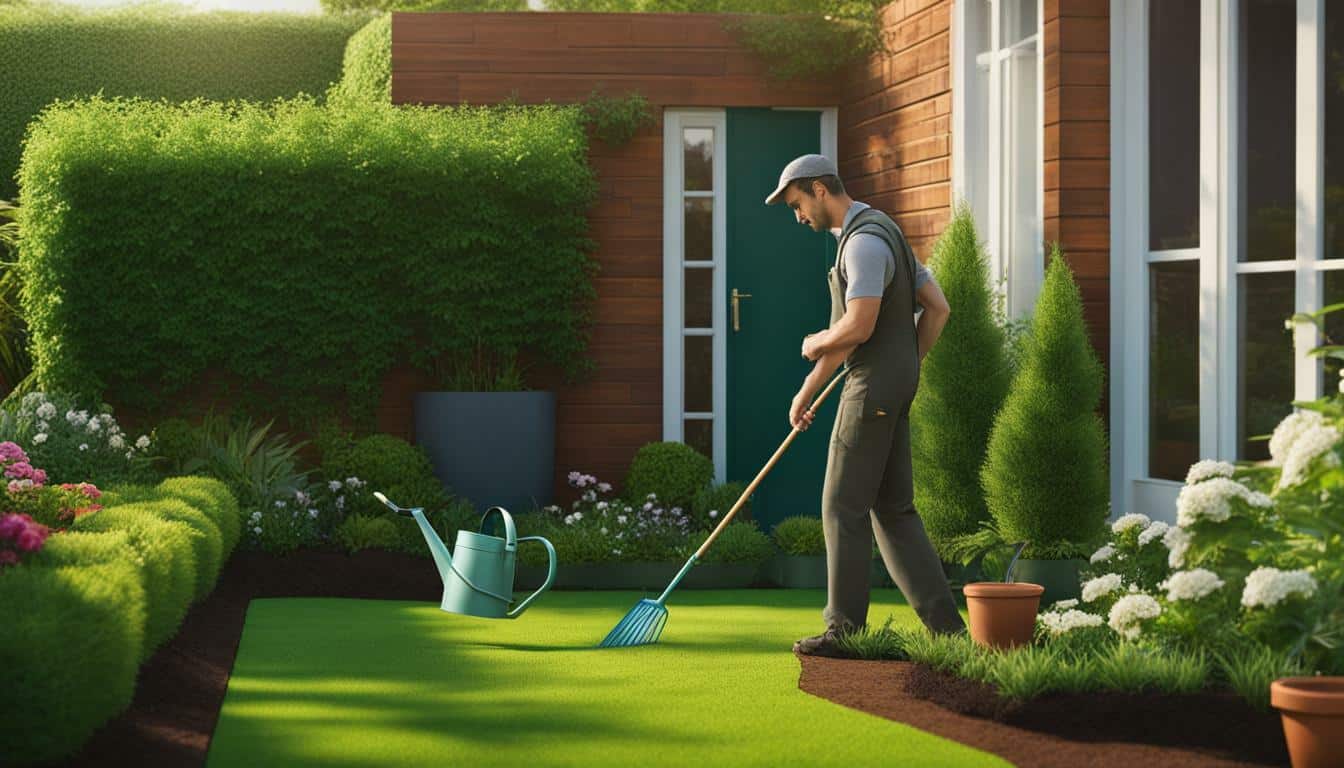



Leave a Reply